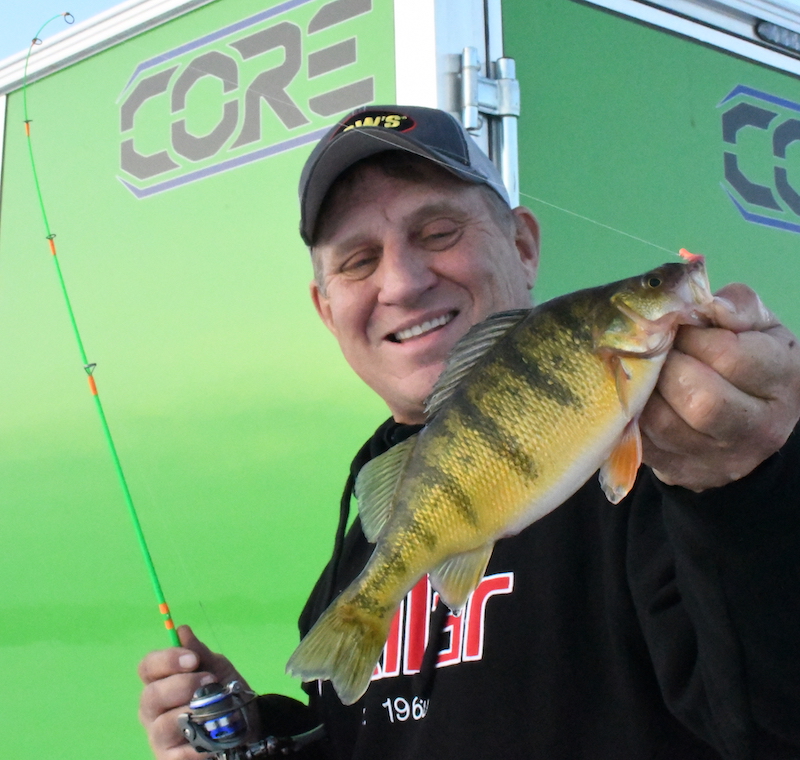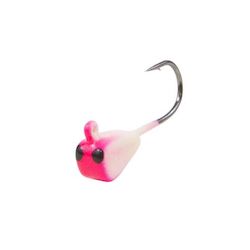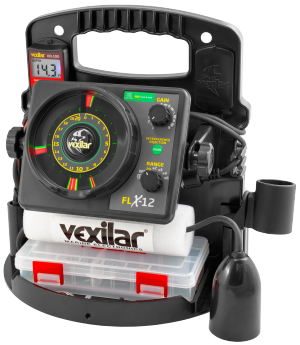Factors in Fishing Success!
 FACTORS IN FISHING SUCCESS
FACTORS IN FISHING SUCCESS
by Bob Jensen
Across much of the Midwest, it’s ice-fishing season. However, across much of the Midwest, we’ve experienced inconsistent weather in the past few weeks, which has led to inconsistent success on the ice. When it comes to ice-fishing or open water fishing, as different as they may seem, weather is a consistent factor in either situation.
Most anglers understand that weather is a major factor in open water fishing, but are surprised to learn that fish under the ice are also affected by weather conditions. It has to do with things that we can’t see, but that the fish can feel, even through a layer of ice. In the summer, when there are several days in a row of warm weather, the fish bite pretty good. The weather is consistent. Then a front goes through. It rains and thunders and there’s lightning. The next day the skies clear, the temperatures drop, and the fish catching really slows down. The weather has the fish in a funk.
The same thing, with some changes, takes place in the winter. Several warm days followed by colder weather seems to damper the fishes hunger: They aren’t interested in eating, but if we present a bait just right, maybe they’ll take it.
Compare the fish in this mood to your mood after you’ve had a big meal. You don’t feel hungry, but you’ll nibble on something if it looks just right. You don’t feel like a whole cheeseburger, but you’ll take a sliver of pie. When a weather front goes through and dampens the fish’s appetite, we need to give them a sliver of pie.
In open water or through the ice, when conditions get tough, we generally need to slow down. In open water, that often means that we need to go to live bait rigs worked slowly, and sometimes live bait below a slip-bobber will be even better.
Through the ice, we’re usually fishing pretty slow anyway, but we need to slow down even more. I’ve experienced situations when hand tremors put too much action on the bait. We had to rest our elbow on our knee to reduce the natural shaking that most people have if we wanted to catch fish. That was extreme, but it was real.
The most important thing to do to increase our odds for success when the fish are skittish is scale down. Go to smaller baits. Genz Drop-Kick jigs tipped with live spikes or waxworms are the way to go.
These jigs look tiny, but they fish big due to the tungsten they’re made of. Sometimes it works well to add just one piece of bait, sometimes several do a better job.
Also experiment with color. When the fish are finicky, a particular color can be the difference between a few bites and no bites. Vexilar sonar units operate in real-time, so you can see fish come in and look at your bait as it’s actually happening.
If they look but don’t eat a couple of times, try a different color jig. Real-time is important. You want to put a different color jig down there while the fish is still in the area.
Last thing: Use a line that is invisible as possible but that you have confidence in. Ice is hard on line, so you want to be sure that, once a fish is hooked, you can get it on top of the ice. 3 pound test Floroice is tough stuff, but it’s also hard for the fish to see.
The catching part of fishing can be more difficult after a weather change, but if you keep these ideas in mind, your chances for success will increase.
* * *
To see the most current and some older episodes of Fishing the Midwest television, fishing articles and fishing videos, and to enter to win a Vexilar depth-finder, go to fishingthemidwest.com




